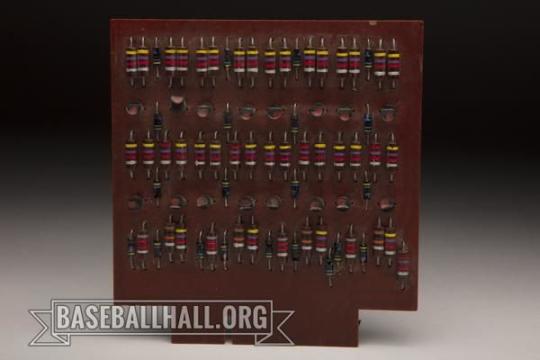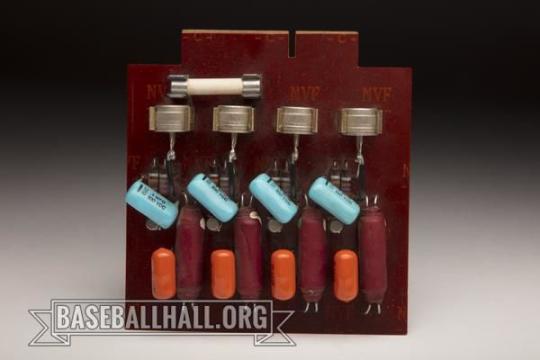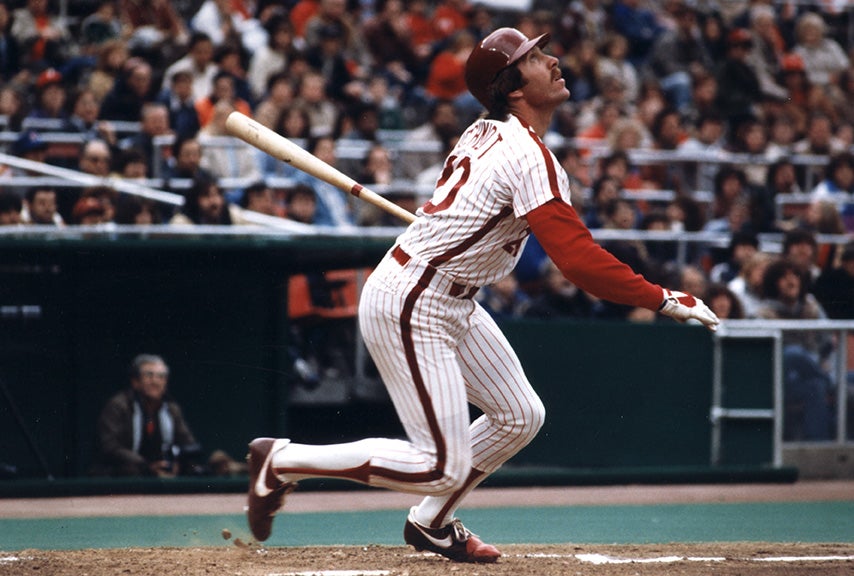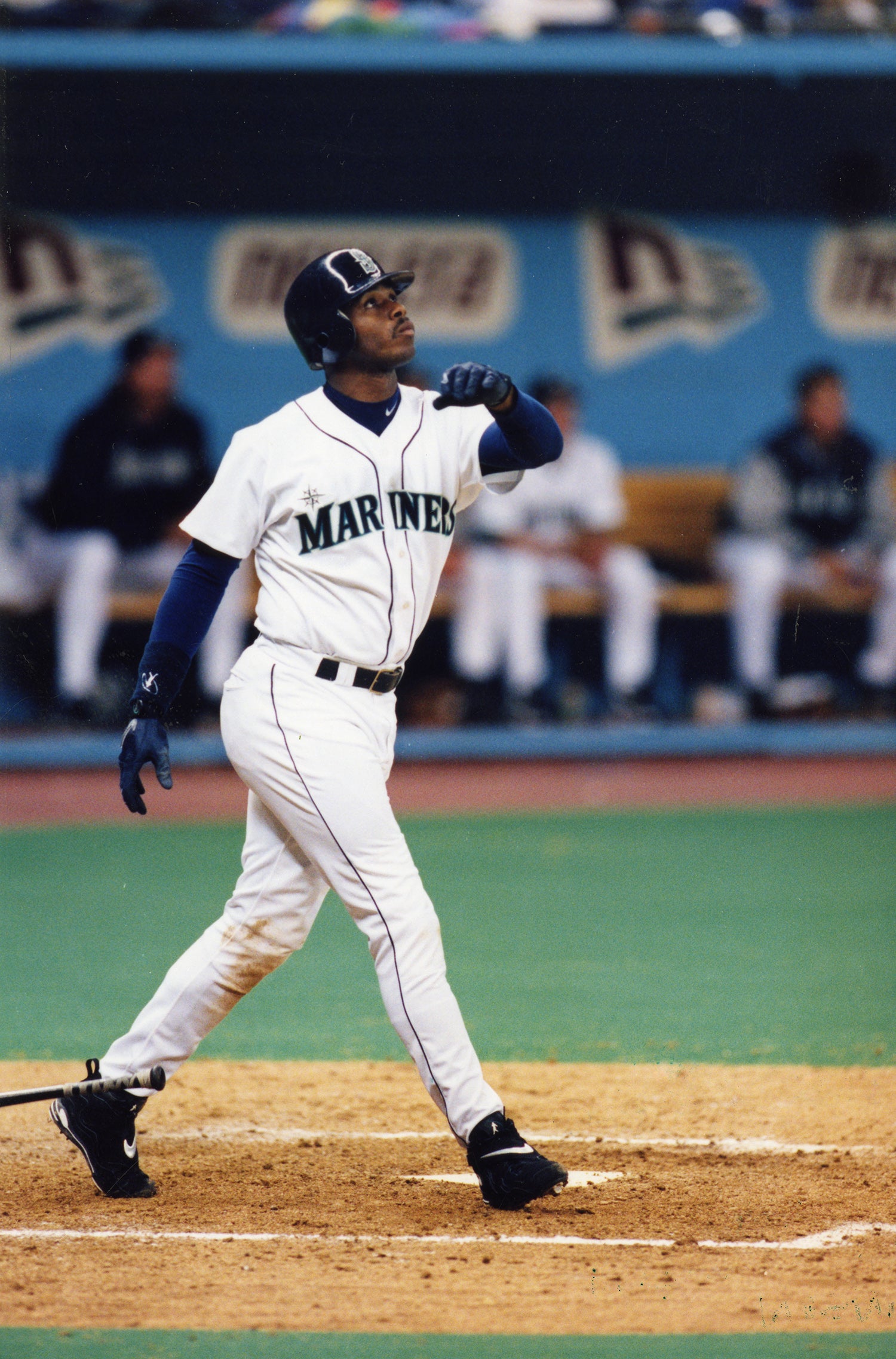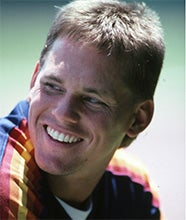- Home
- Our Stories
- #Shortstops: Houston history in Cooperstown
#Shortstops: Houston history in Cooperstown
Major League Baseball in Texas started with a bang.
On Jan. 3, 1962, Judge Roy Hofheinz and other Houston officials fired blanks from Colt .45 pistols into the dirt for the ceremonial groundbreaking of the Astrodome. Houston was awarded an expansion team, conditional on having an indoor stadium. Hofheinz, a former mayor, campaign manager for Lyndon B. Johonson, real-estate developer and now president of the new expansion team, fulfilled that condition in grand style.
Astros Gear
Represent the all-time greats and know your purchase plays a part in preserving baseball history.
When the Astrodome opened for the team’s fourth season in 1965, it was a feat of modern engineering. Often called the Eighth Wonder of the World, the Smithsonian says it was “twice as large as any single enclosure ever built before.” The playing field sat 25 feet below the street level with the dome towering 18 stories overhead.
When it opened, over 4,000 skylights let in enough light to maintain grass. Outfielders regularly lost fly balls in the sun reflecting off the Lucite, which led to some of the skylights being painted and caused the grass to die. To solve this problem, the Astrodome because the first field to have artificial turf, originally called ChemGrass and later renamed to AstroTurf. One year after it opened, the Astrodome was the third-most visited man-made attraction in America, behind the Golden Gate Bridge and Mount Rushmore.
The Astrodome was also home to the first animated scoreboard, known as the Astrolite. The board was 474 feet long and entertained crowds from 1965 until 1988. Hofheinz worked with Fair Play Scoreboards in Des Moines, Iowa, to design and build the $2.1 million board. Two side panels showed the lineups, other MLB game scores and in-game messaging. Between them sat the Diamond Vision, the instant replay screen, which was powered by a state-of-the-art computer.
A crew of 11 technicians and cameramen was required to operate the 26.5 by 37.5 foot screen. The board engaged the crowd throughout the game by playing the “Charge!” and other chants. Across the top of all of that was the Home Run Spectacular describe in the 1988 Houston Astros Media Guide as “over 40,000 tiny lights form images of cowboys riding, roping and shooting; snorting bulls with flags on their horns; the Astrodome with a home run ball exploding through the roof; and fireworks.”
While visiting teams often found the noise and flashing lights of the scoreboard to be disruptive, Astros fans loved the new environment, and the ticket numbers proved it. The Astros were the first team to pass the 500,000 attendance mark in 1965. One new fan said “I’d never been to a baseball game before this year. I’ve already been to the Domed Stadium four times, and if they take away the Charge, I’ll stop going.”
Hofheinz had succeeded in making the Astrodome be about more than just the baseball game. During the Astrodome’s second season, Roger Angell’s article “The Cool Bubble” quoted Hofheinz saying:
Why, in most other parks you got nothing to do but watch the game, keep score, and sit on a hard wooden seat. This place was built to keep the fans happy. They’ve got our good seats, fine restaurants, and our scoreboard to look at, and they don’t have to make a personal sacrifice to like baseball. . . . We’re in the business of sports entertainment. Baseball isn’t a game to which your individuals come alone just to watch the game. They come for social enjoyment. They like to entertain and be entertained at the ball park.
The Astrodome was more than just a ballpark for Hofheinz. It was also his home. Behind the Astrolite, Hofheinz had an apartment which the LA Times says “took up parts of seven floors and had a shooting gallery, a chapel, a putting green and a bowling alley. There was a bedroom with a 24-foot ceiling called the Presidential Suite and a bar called the Tipsy Tavern.”
When all of that was removed in a $60 million renovation in 1988, two circuit chips and light bulbs were donated to the Hall of Fame’s collection. The board and apartment were replaced with 10,000 more seats in an effort to keep the football team, the Houston Oilers, from leaving.
Even without the Astrolite, “the Astrodome to continue its role as the trendsetter in stadium technology,” as stated in the 1989 Media Guide. It was replaced by two Diamond Vision screens, “the largest PC based matrix operation in the nation” with three matrix boards, a game-in-progress board, and two hundred television monitors around ballpark.
The Astrodome and its scoreboard helped create the stadium environment we know now. Today’s baseball fans can count on the video scoreboards to provide information and entertainment before and during the game, but even the current largest board in Major League Baseball is still less than half the length of the Astrolite.
Rachel Kingham was the 2019 special events intern in the Hall of Fame’s Frank and Peggy Steele Internship Program for Youth Leadership Development and currently serves as the special events assistant at the National Baseball Hall of Fame and Museum

